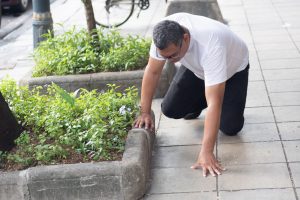
Here’s what you need to know about obtaining compensation for pain and suffering after being injured in a slip-and-fall accident:
An Overview Of Slip-And-Fall Accident Damages
Damages are compensation for an accident victim’s injuries and losses.
In a typical personal injury claim, damages will usually fall into either one of the following categories:
- Economic damages, which compensate a victim’s verifiable financial losses; and
- Non-economic damages, which compensate a victim’s intangible losses.
“Pain and suffering” is a kind of non-economic damage encompassing different feelings of hardship, anguish, and loss.
The 2 Types of Pain And Suffering Damages
New York’s courts recognize the following forms of pain and suffering-related damages.
- Physical Pain and Suffering: Physical pain and suffering damages are awarded if the victim establishes that their injuries have caused them to suffer chronic pain or other feelings of physical discomfort as a result of their accident.
- Emotional Pain and Suffering: Emotional pain and suffering damages are intended to restore a victim’s peace of mind. They may be awarded if the accident has left a victim traumatized or otherwise distressed.
In general, accident victims are only entitled to compensation for pain and suffering if their injuries meet certain criteria.
How To Prove Pain And Suffering After A Slip-And-Fall Accident
Since “pain and suffering” relate to your unique symptoms and circumstances, negotiating damages with an insurance company or a defense attorney could prove very difficult.
The following types of evidence are frequently used to establish the severity and extent of an individual’s pain and suffering:
- Medical Records: Medical records ensure that you meet the requirements set by New York’s “serious injury” threshold, and could help establish the relative severity of your physical and emotional symptoms.
- Personal Notes and Pain Journals: Personal notes and pain journals can be used in court to demonstrate how an accident-related injury impacts your everyday life—whether by causing constant discomfort or making it much more difficult to fall asleep at night.
- Testimony From Friends and Family: The people who know you best—family members, friends, and even coworkers—can share their observations about how your slip-and-fall accident has impacted your mental health.
Factors That Affect Pain And Suffering Damages
New York does not limit pain and suffering damages in most slip-and-fall accident claims. However, your recovery could be influenced by factors including, but not limited to, the following:
- The Severity of Your Injury: Serious physical injuries typically correspond with greater awards of pain and suffering damages.
- The Duration of Recovery: Slip-and-fall accident injuries that necessitate surgery, physical rehabilitation, or long recovery times can make it much more difficult for victims to resume their everyday routines. Longer recovery times are typically associated with higher awards.
- The Extent of a Defendant’s Liability: New York is a pure comparative negligence state, which means that a victim’s slip-and-fall damages can be reduced if they are found partially at fault for their injuries.
Why You Need To Speak To A Personal Injury Attorney
You should never have to pay out-of-pocket for a slip-and-fall accident that was not your fault.
Since our founding in 2005, the Dietrich Law Firm P.C. has fought to protect the rights of slip-and-fall accident victims. We know what it takes to build a compelling case for pain and suffering damages—and we have the results to prove it. Please call us today at 716-839-3939 to speak to a personal injury lawyer and schedule your 100% free, no-obligation consultation.
